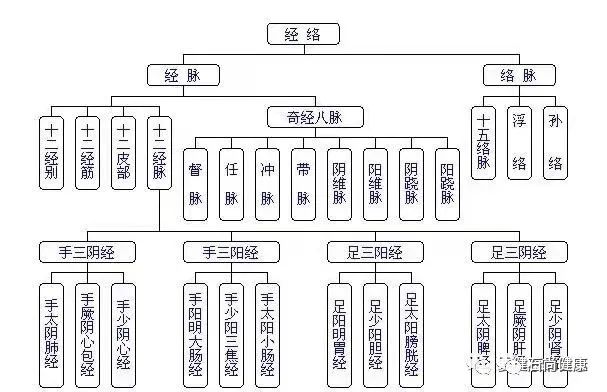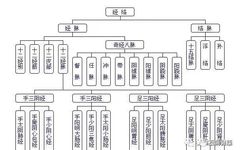
Jingmai (经脉) are generally not easily visible; their changes in fullness and emptiness can be diagnosed from the cun kou (寸口) pulse position. The visible pulses are all luomai (络脉). All luomai do not pass through large joints but connect in the spaces where jingmai cannot reach, and when combined with the floating luomai of the skin, they manifest externally. Therefore, when needling the luomai, it is essential to needle at the points where blood stagnation occurs; if there is significant blood accumulation, even if there is no stagnation in the luomai, one should urgently needle the luomai to release the stagnant blood, to dispel the pathogenic factors; otherwise, the stagnation will remain in the body and may lead to bi syndrome (痹痛证). Generally, the color of the luomai is examined to determine diseases: if the luomai is blue, it indicates cold evil stagnation causing pain; if red, it indicates heat signs. If there is cold in the stomach, the luomai in the hand’s fish region often appears blue; if there is heat in the stomach, the luomai at the edge of the hand’s fish region often appears red. If the luomai shows black, it indicates a long-standing evil causing bi syndrome; if the luomai has a mix of red, black, and blue, it indicates a mixed cold-heat condition; if the luomai is blue and short, it indicates qi deficiency (气虚证). During acupuncture treatment for cold-heat diseases, one should frequently needle the superficial blood luomai, and it must be needled every other day until the stagnant blood is completely released, then adjust treatment according to the condition of fullness and emptiness; if the luomai is small and short, it indicates qi deficiency; using purging methods on such patients may cause confusion and agitation, even sudden collapse and inability to speak. When confusion and agitation occur, one should immediately assist the patient to sit up and perform emergency measures.Differences Between Jingmai and Luomai The main differences can be summarized as follows:First, Jingmai run deep while Luomai run shallow.“The twelve jingmai run deep between the flesh and are not visible.” “All pulses that are floating and commonly seen are luomai.” This indicates that there is a difference in the depth of the pathways of jingmai and luomai; therefore, what can be seen is the luomai that float on the surface of the muscles, but there are exceptions, such as “the foot taiyin (足太阴) above the outer ankle, which is not hidden.”Second, Jingmai are long while Luomai are short.Jingmai are internally connected to the organs and externally connect to the limbs, hence their long pathways. Luomai connect the various jingmai at the distal ends of the limbs, generally “starting between the five fingers and connecting at the elbow.” Hence, they are considered short.Third, Jingmai run vertically while Luomai run horizontally.All twelve jingmai run vertically along the body. In contrast, luomai often run horizontally, connecting between the various jingmai, as stated in the Ling Shu (《灵枢·经脉》): “All luomai cannot pass between large joints; they must run through the gaps and enter, merging with the skin, their convergence is all seen externally.” The “gaps” refer to the horizontal interconnections of the luomai.Fourth, deep needling of Jingmai does not cause bleeding, while shallow needling of Luomai easily causes bleeding.Needling the luomai must be done at the points of blood accumulation to be effective. Therefore, the Ling Shu states: “Thus, those who needle the luomai must needle at the points of accumulation; if there is much blood, even if there is no accumulation, it should be urgently taken to dispel the evil and release the blood.”Fifth, Jingmai diagnose the whole body, while Luomai diagnose local areas and colors.Jingmai are diagnosed at the cun kou, as the pulse can indicate the fullness and emptiness of the twelve jingmai and changes in the whole body. In contrast, luomai are diagnosed at the fish border to assess local changes. The color of the luomai can also be used to determine the condition, such as “when diagnosing luomai, if the pulse is blue, it indicates cold and pain; if red, it indicates heat.”Sixth, Jingmai govern the nutritive qi, while Luomai govern the defensive qi.“Ying (营) runs in the vessels, Wei (卫) runs outside the vessels.” (Ling Shu《灵枢·营卫生会》) Because Wei qi circulates during the day in the Yang and at night in the Yin, it mainly disperses, and Wei qi first enters the luomai before the nutritive qi circulates through the twelve jingmai after being transformed in the middle jiao.For more health and wellness knowledge, follow “Shishang Jiankang”!


